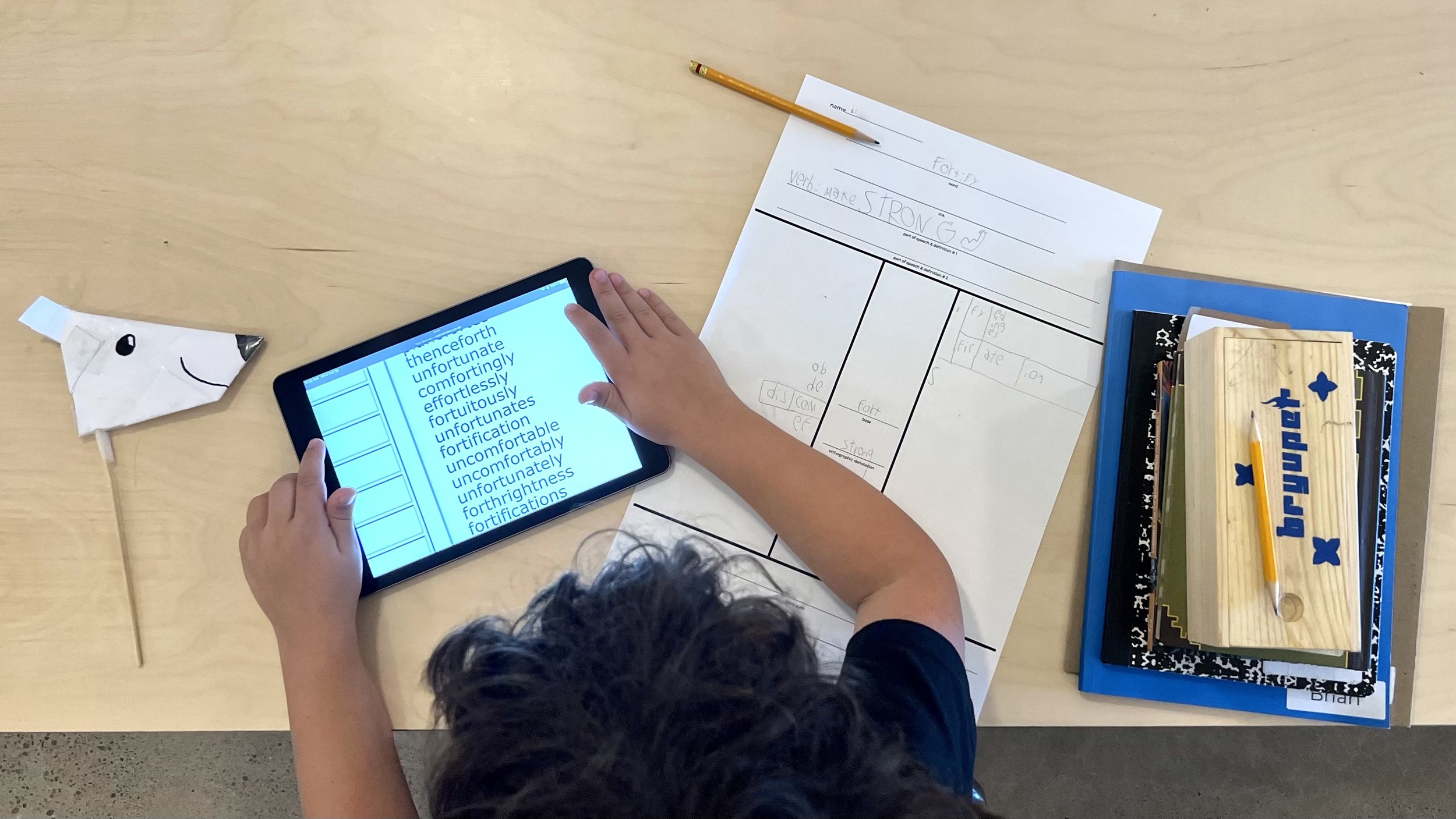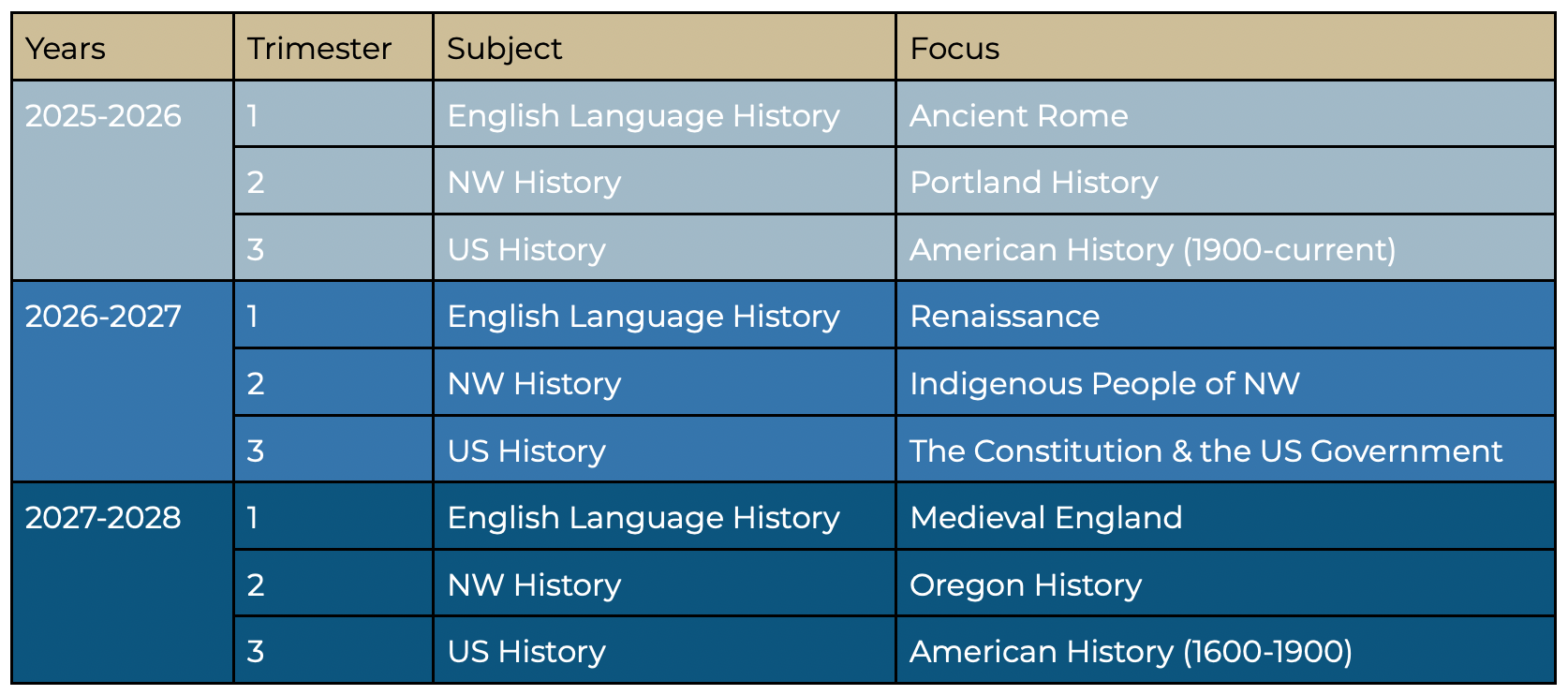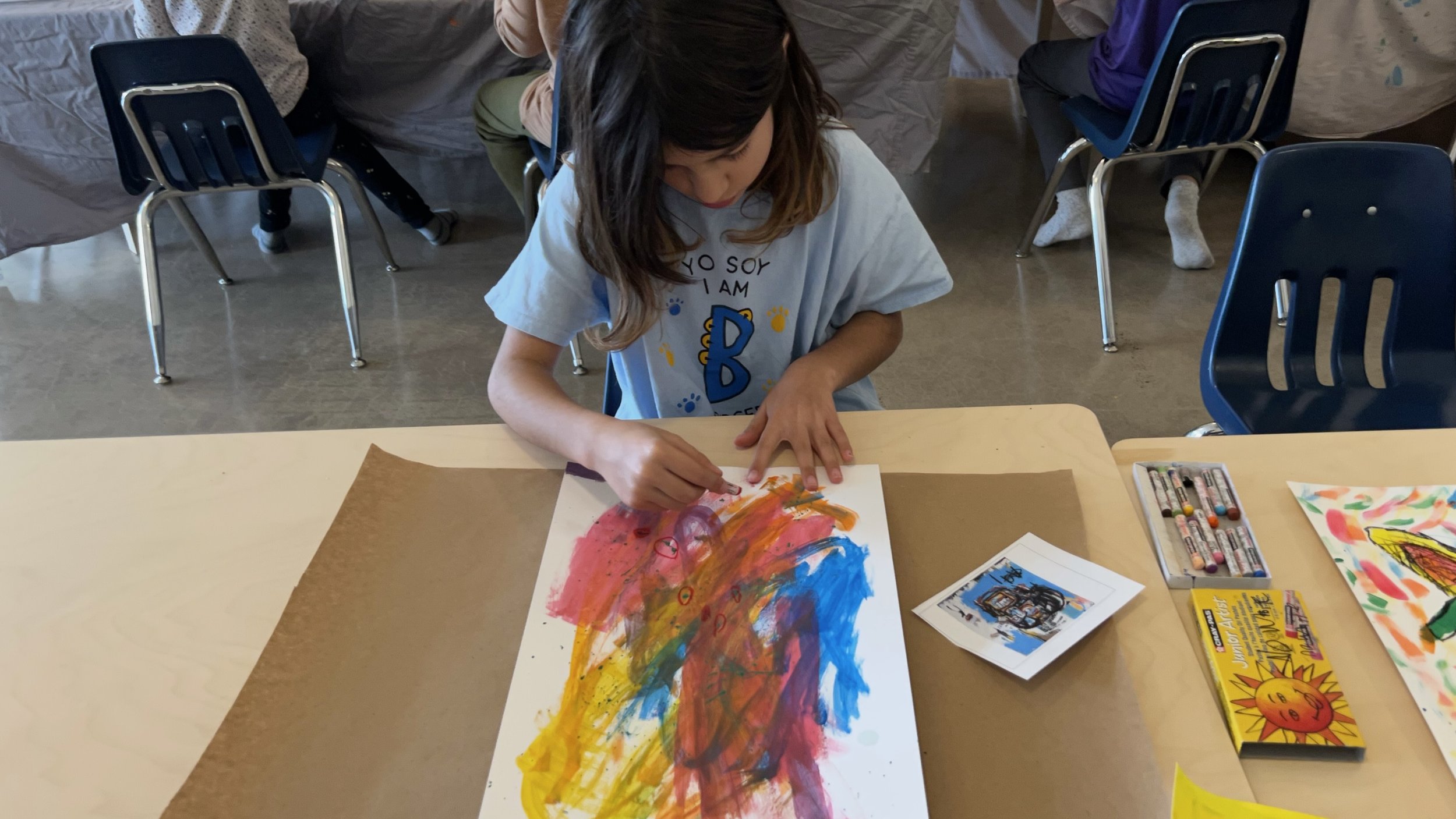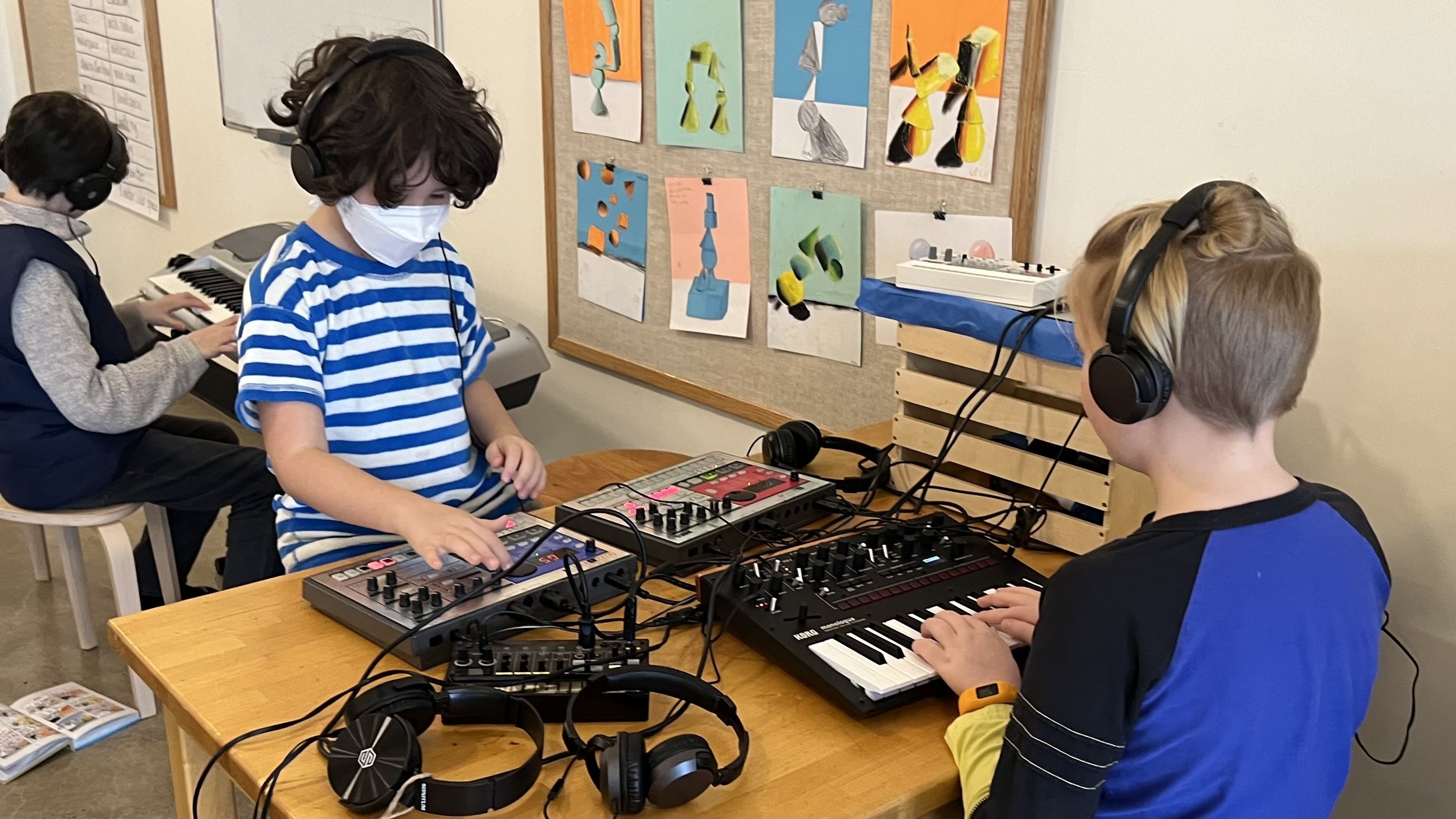How We Learn
Activate specializes in art, hands-on learning, and literacy. We foster joy and academic, creative, and emotional growth through teacher-directed and self-directed learning.
Students thrive due to our art focus, low staff-to-student ratio, cross-curricular integration, engaging content, field trips, hands-on projects, research-based and data-driven core curriculum, relaxed atmosphere, and long recesses. Our calming, comfortable, thoughtfully arranged space allows kids to freely explore art, music, engineering, books, puzzles, and more.
We have no homework, screen-based curriculum, or lengthy standardized tests.
Workshop
Each trimester we offer a science workshop and an art workshop. Two afternoons per week are dedicated to the workshop. Each workshop results in a culminating project. Here is the three-year workshop schedule.
Literacy
This student is studying the base <fort> which comes from the Latin word for ‘strong.’ He is researching words on his iPad, and he is constructing a word matrix that shows morphological relatives, like ‘effort,’ ‘comfortable,’ and ‘fortress.’
We aim to promote a love of words and books, and we know that children must have strong literacy skills for that to be possible.
We developed a framework in which students systematically study phoneme-grapheme (sound-letter) correspondence, morphology (word structure), and etymology (word history).
Phoneme-grapheme (sound-letter) correspondence is taught explicitly, sequentially, and with repeated review and practice. Importantly, we teach this content accurately and aligned to established linguistics. The teaching of phoneme-grapheme correspondence is widely known as phonics.
Our two literacy teachers are trained in Orton Gillingham (OG), which is a multi-sensory phonics program. We use some components of OG but aren’t strict adherents.
Phoneme awareness refers to the ability to identify and manipulate the individual phonemes (sounds) in words. Many children with dyslexia struggle with this crucial foundational ability, which is why phoneme awareness activities are integrated into daily routines.
Morphology is the study of word structure. Morphemes are bases, affixes (prefixes and suffixes), and connecting vowels. Our approach to teaching morphology is inspired by the Structured Word Inquiry framework.
Critically, we study the interrelationship of phoneme-grapheme correspondence, morphology, and etymology.
Students are granted considerable time to read self-selected books. They also partake in novel studies and read assigned informational texts.
Our literacy approach is designed to be effective for all students, with a particular focus on those with dyslexia.
Social Studies
Social studies are integrated into our literacy block. Each trimester has a different focus. In the first trimester, the students study history related to the development of the English language. In the second trimester, they study regional history. In the third trimester, they study United States history. The focus on regional history and the United States’ history connects to Oregon social studies standards.
Students learn about history through multimedia presentations and by reading biographies, historical fiction, and nonfiction. Each week, they study a word related to their history lesson.
Math
We use JUMP Math as our core math curriculum. It’s a research-based screen-free program that helps students build strong math skills through clear instruction, practice, and cumulative review. Lessons are broken into small, carefully sequenced steps, allowing learners to experience success and understanding before moving forward. The program emphasizes problem-solving, reasoning, and real-world application.
We have Jump Math curriculum for grades three through six, allowing us to challenge our above-level mathematicians by having them work at a grade level above their level. It also enables us to provide lower-level materials for children who are well below grade level. (We currently have four students working at a grade above, two working at a grade below, and 12 working at their grade level.)
We supplement Jump Math with engaging screenless math games that we’ve developed and games that we’ve adopted and adapted from other programs.
Handwriting
This student is practicing <q> and <u> and experimenting with ligaturing these letters.
All our students receive explicit instruction on how to write in beautiful Chancery Script. It differs from traditional printing in a few ways. One significant difference is that some letters like cursive can be ligatured (connected).
In this style, there is an emphasis on elegance, proportionality, comfort, individuality, and joy. This instruction is beneficial to all children, but it’s especially valuable to children with dysgraphia.
Art
Activate is well known for its art-based summer camps. Activate was an art enrichment program years before it became a school, and art continues to be a focus of our program.
Students have a traditional art class outside the workshop block twice a week. They work with many different mediums, study the seven elements of art, study influential artists, and create projects inspired by these artists.
Free Explore
We strongly believe that children need the space, time, resources, and inspiration to pursue their scholarly and artistic interests. We allow them that time daily during our Free Explore period. They immerse themselves in activities such as music production, tinkering in the maker space, painting, reading, and so much more.
The teachers use this time to offer one-on-one academic support.
Recess
We have an hour-long recess after lunch and a 45-minute aftercare recess. Recess is always outdoors, rain or shine, and it’s always unstructured play in which the adults mostly stay out of the way.
We usually go to Johnson Creek Park for recess, just two blocks away. The park has two creeks, wooded areas, grassy areas, a play structure, and swings. Students can wade in the creeks during the warm months, play, and catch crawdads! We sometimes have recess at Sellwood Park or Westmoreland Park instead.
Field Trips
There is so much to learn and so much to have fun outside the classroom walls. We have a passenger van and minivan, making field trips very easy.
We go to the local library twice a month, swim at North Clackamas Aquatic Park twice a month (we rent the facility), and other places that tie into our workshop focus, such as museums and natural areas.









